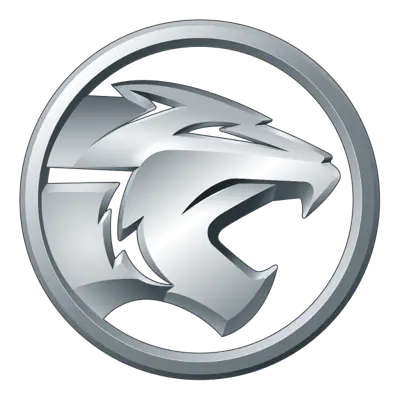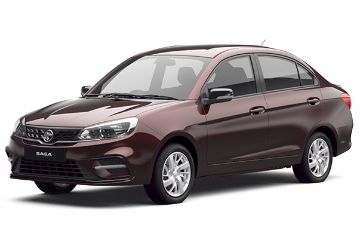![How the Proton Saga went from RM 17,575 in year 1985 to RM 32,800 today 01]()
When the Proton Saga was first launched in 1985, a fresh graduate who earns a monthly salary of RM 1,000 can expect a reasonably comfortable life, even in the city.
A bowl of noodle was just a little over a Ringgit, and a McDonalds burger would have cost just RM 3. A Nissan Sunny 130Y, the default car for middle-class families, retails for RM 19,500. Depending on how far along was one in his/her career, that’s about 1.5 years’ worth a young person’s salary.
When the first Proton Saga was introduced in 1985, it was priced at RM 17,575 for the cheapest 1.3S, making it the cheapest new car on the market.
![How the Proton Saga went from RM 17,575 in year 1985 to RM 32,800 today 01]()
That money buys you Mitsubishi salarymen’s finest 73 horsepower and 105 Nm, five-speed manual transmission, no passenger-side mirrors, no radio, and no air-conditioning (available as an option, standard is blower only). Those specifications might sound shockingly poor when you compare it to today’s Saga’s offerings, but that was how budget cars of that era were equipped.
Fast forward to 2019, the cheapest Proton now sells for RM 32,800 – still the cheapest sedan you can buy today.
Today’s fresh graduate’s starting salary is slightly less than RM 3,000 per month. In other words, it still costs about a year’s worth of a young executive’s salary to buy a Saga, debate on quality of today’s graduates aside.
![How the Proton Saga went from RM 17,575 in year 1985 to RM 32,800 today 02]()
Despite the similar adjusted real value, many of today’s Saga customers can’t afford the car without resorting to a long nine-year loan, which no accountant will recommend but it is now considered normal.
So what has changed? Well for starters, our parents were able to buy a reasonably sized terrace house in a middle-class neighbourhood for RM50,000 in the ‘80s. Today, a similar size house sells for upwards of RM500,000.
It used to be that RM 100 worth of groceries can feed a family of four for a month. Today, that same amount can barely last that same family a week.
You could also get by with your work without a smartphone and laptop.
In other words, today’s consumers are forced to pay for a lot more things with the same amount of money.
While the increase in prices of the Saga has been in tandem with increase with a fresh graduate’s starting salary, the value of our Ringgit hasn’t, which also explains the increase in prices of nearly everything else.
![How the Proton Saga went from RM 17,575 in year 1985 to RM 32,800 today 03]()
When the Proton Saga was launched in 1985, it takes just RM 2.51 to buy 1 US Dollar, RM 8.80 to buy 100 Thai Baht, RM 1.15 for 1 Singapore Dollar, RM 0.96 for 100 Japanese Yen.
Today, the exchange rate is RM 4.19 for 1 US Dollar, RM 13.60 for 100 Thai Baht, RM 3 for 1 Singapore Dollar, and RM 3.95 for 100 Japanese Yen.
It is a popular opinion that much of Proton’s early success in Malaysia was due to the government imposing higher taxes for all foreign brand cars. That’s not quite true, at least not in the ‘80s.
![How the Proton Saga went from RM 17,575 in year 1985 to RM 32,800 today 04]()
What the government did was to give Proton an exemption from paying the 25 percent import tax on Japan-made parts from its then technical partner Mitsubishi Motors, as well a 50 percent discount on excise tax.
Essentially, there were no change in prices of a Toyota Corolla or a Nissan Sunny 130Y or even a Honda Civic – the Proton Saga’s main rivals - before and after the Proton Saga’s launch.
![How the Proton Saga went from RM 17,575 in year 1985 to RM 32,800 today 05]()
What happened was that Proton was given a handicap (via import duty exemption for CKD kits) to undercut its Japanese rivals.
However the situation had changed drastically by the late ‘80s as the value of Japanese Yen rose sharply against the Ringgit, more than doubling its value. Prices of Japanese cars also rose significantly in tandem but to the average folk, it was part of the government’s intention to force locals to buy Proton cars – there is some truth in that claim but like everything trade or public policy-related, there’s no black/white answer as there were other factors at play.
![How the Proton Saga went from RM 17,575 in year 1985 to RM 32,800 today 06]()
Further complicating the comparison was that the Civic, Sunny (Sentra) and Corolla were all in the midst of moving up in their respective hierarchy – handing entry-level segment duties to the City, Almera, and Vios while the Saga remained unchanged as an entry level car.
How did prices of those supposedly entry-level cars remain high require a separate posts to explain.
![How the Proton Saga went from RM 17,575 in year 1985 to RM 32,800 today 07]()
Despite being made mostly with locally-sourced parts, Proton still needs to import a fair amount of raw materials to manufacture a car. Steel for the body and iron for the engine block for example, as well as transmissions from Korea.
The aforementioned depreciation of the Ringgit’s value over the last 30 years does have an impact so it’s no longer possible to build a car here for less than RM 20,000 and still meet the requirements of today’s demanding customers.
![How the Proton Saga went from RM 17,575 in year 1985 to RM 32,800 today 08]()
So did the previous generation had a better deal when they bought the Saga? Not necessarily. The first Saga was the cheapest in the segment because it doesn’t offer much else to set it apart from the competition. The Toyota Corolla for example, was already using 12-valve engine technology while the Saga had to make do with an 8-valve engine for nearly a decade.
Today’s Saga can holds its ground against the competition, not just against local rivals like the Perodua Bezza but against similar budget cars sold elsewhere – cars like India’s Toyota Etios or Thailand’s Honda’s Brio Amaze.
![How the Proton Saga went from RM 17,575 in year 1985 to RM 32,800 today 09]()
The updated 2019 Proton Saga meets minimum global safety standards set by the United Nations Economic Commission for Europe (UNECE). It even comes with electronic stability control and adjustable steering wheel column, both of which are not common for budget cars.
How well does the Saga perform on the road and whether Proton’s claims on quality improvements are valid, we will find out more in the coming months.

















